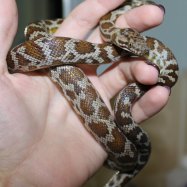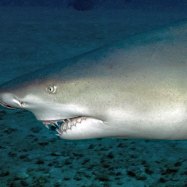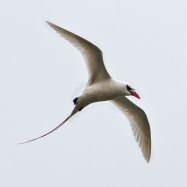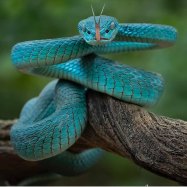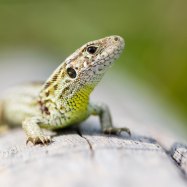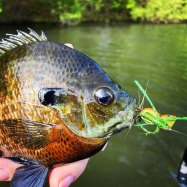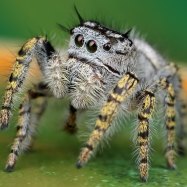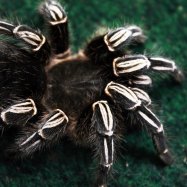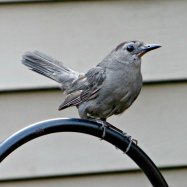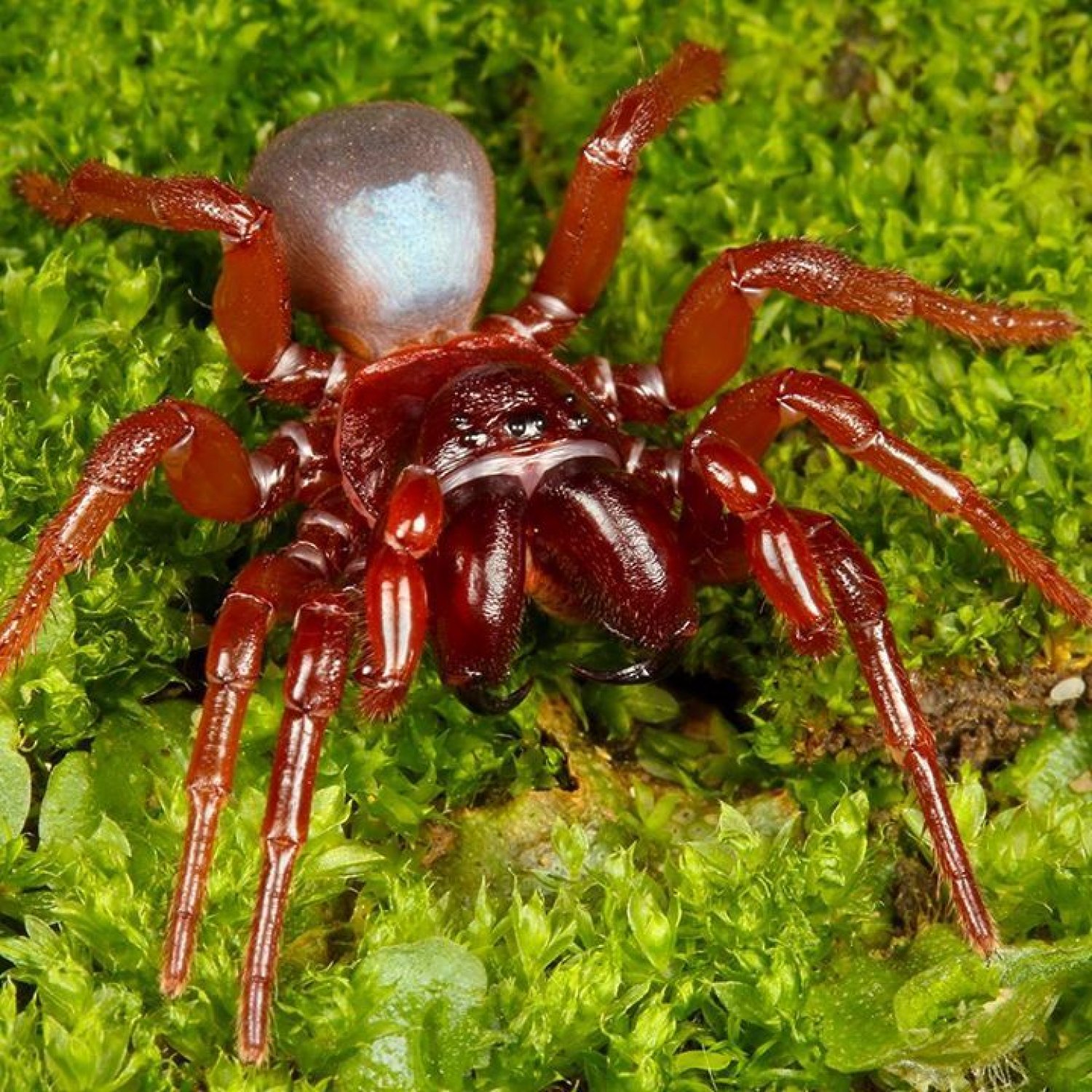
Mouse Spider
The average body length of male mouse spiders is around 1-2 cm, while females can reach up to 3-4 cm in length.
Meet the mouse spider, a fascinating family of arachnids found in Australia. These stocky and robust creatures come in a range of sizes, with females being larger than males. Be cautious of their powerful legs and large fangs as you encounter them in Victoria, New South Wales, South Australia, and Western Australia. #MouseSpider #Actinopodidae #FascinatingArachnids
Animal Details Summary:
Common Name: Mouse Spider
Kingdom: Animalia
Habitat: Mouse spiders are found in underground burrows in a variety of habitats, including woodlands, grasslands, and coastal areas.
The Mighty Mouse Spider: A Fascinating Arachnid from Down Under
In the world of arachnids, one group of spiders stands out for its unique appearance and behavior - the Mouse Spider. Though their name may evoke images of a cute, tiny rodent, these spiders are far from harmless. In fact, they are known for their powerful venom and impressive hunting abilities.Scientifically named Missulena spp Mouse Spider., Mouse Spiders belong to the class Arachnida and the order Mygalomorphae. They are part of the family Actinopodidae and are commonly referred to as Mouse Spiders due to their dark-colored, shiny appearance. These spiders are found in Australia, particularly in the Southern and Central regions, making them a unique and endemic species to the continent.
Habitat and Distribution
Mouse Spiders are typically found in underground burrows in a variety of habitats, including woodlands, grasslands, and coastal areas. They prefer moist, well-drained soil and can be found under rocks, logs, and debris. These spiders are also known to dig their own burrows, which can reach up to 30 cm in depth. Interestingly, these burrows have a cork-like top, created using silk and soil, to keep the spider safe from predators and harsh climate conditions.Considering their distribution, Mouse Spiders are mostly found in the states of Victoria, New South Wales, South Australia, and Western Australia. This limited distribution is due to the highly specialized habitat requirements of these spiders Megalania. They are also rarely seen, as they prefer to stay hidden in their burrows during the day and only come out at night to hunt.
Diet and Hunting Strategy
As carnivorous creatures, Mouse Spiders primarily feed on insects, small vertebrates, and even other spiders. They are known for their formidable hunting abilities, making them one of the top predators in their ecosystem. These spiders use their strong and spiny legs to dig and move quickly through the soil, making them efficient hunters. Once they spot their prey, they use their large, powerful fangs to inject their venom, immobilizing their victim. They then use their digestive enzymes to break down their prey's tissue, making it easier to consume.Physical Characteristics
Mouse Spiders have a unique and distinctive appearance, which makes them stand out among other spiders. They have a dark-colored, shiny body with a velvety texture, giving them a sleek and striking look. The males are usually black or dark brown, while the females are bigger and can be black, dark brown, or sometimes reddish-brown. Another defining feature of these spiders is the red color on their fangs, which is caused by the presence of hemocyanin, a respiratory protein.In terms of body shape, Mouse Spiders have a stocky and robust build, with females being larger than males. On average, males can reach a length of 1-2 cm, while females can grow up to 3-4 cm. These spiders also have powerful, spiny legs, which they use for digging and hunting, and their large fangs aid them in injecting their venom.
Venom and Threat to Humans
Like many spiders, Mouse Spiders are venomous, and their bite can be harmful to humans. However, they are not considered extremely dangerous, as they are not aggressive and will only bite when threatened. In general, their venom is more potent than that of a Redback Spider, but less potent than the Sydney Funnel-web Spider, which is considered the deadliest spider in the world.If bitten by a Mouse Spider, the symptoms can vary from mild pain and swelling to severe muscle spasms, breathing difficulties, and even coma. However, if proper medical treatment is sought, most bites are not fatal. It is important to note that not all Mouse Spider bites result in venom being injected, as these spiders can control the amount of venom they release, depending on the size of their prey.
Conservation Status
Being endemic to Australia, Mouse Spiders play an important role in maintaining a healthy ecosystem. However, like many other animals, they are facing several threats, which have led to a decline in their population. One of the major threats they face is the destruction of their habitat due to human activities, such as land development and agriculture. The use of pesticides and other chemicals in farming also poses a significant threat to these spiders. Climate change is another concern, as it is altering the soil conditions in which these spiders thrive.To protect these spiders, it is essential to conserve their natural habitat and raise awareness about their importance in the ecosystem. By educating people about the dangers they face and how to coexist peacefully with them, we can help to ensure the survival of this unique species.
In Conclusion
In the world of spiders, Mouse Spiders stand out for their unique appearance, impressive hunting abilities, and powerful venom. These spiders, found exclusively in Australia, have adapted to thrive in a specialized underground habitat, making them highly specialized and fascinating creatures. While their venom may pose a threat to humans, they play an essential role in maintaining a balanced ecosystem and should be respected and protected.

Mouse Spider
Animal Details Mouse Spider - Scientific Name: Missulena spp.
- Category: Animals M
- Scientific Name: Missulena spp.
- Common Name: Mouse Spider
- Kingdom: Animalia
- Phylum: Arthropoda
- Class: Arachnida
- Order: Mygalomorphae
- Family: Actinopodidae
- Habitat: Mouse spiders are found in underground burrows in a variety of habitats, including woodlands, grasslands, and coastal areas.
- Feeding Method: They are carnivorous and primarily feed on insects, other spiders, and small vertebrates.
- Geographical Distribution: Mouse spiders are found in Australia, particularly the southern and central regions.
- Country of Origin: Australia
- Location: Mouse spiders are commonly found in the states of Victoria, New South Wales, South Australia, and Western Australia.
- Animal Coloration: Mouse spiders have a dark-colored, shiny body with a velvety texture. The males are usually black or dark brown, while the females are larger and can be black, dark brown, or sometimes reddish-brown. They also have a distinctive red color on their fangs.
- Body Shape: Mouse spiders have a stocky and robust body shape, with females being larger than males. They have powerful, spiny legs and large fangs.
- Length: The average body length of male mouse spiders is around 1-2 cm, while females can reach up to 3-4 cm in length.
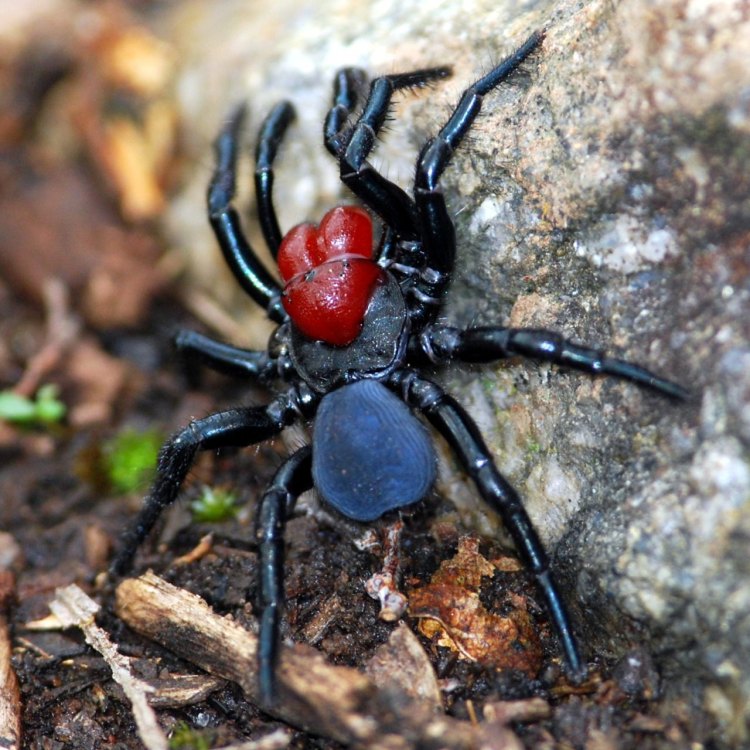
Mouse Spider
- Adult Size: Adult mouse spiders are relatively large compared to other spider species.
- Average Lifespan: The lifespan of mouse spiders is typically around 3-5 years.
- Reproduction: Mouse spiders reproduce sexually, with males depositing sperm into specialized structures called spermathecae in the female's body.
- Reproductive Behavior: During mating, male mouse spiders perform a courtship display by drumming their leg tips on the ground. They also produce vibrations and use pheromones to attract females.
- Sound or Call: Mouse spiders do not produce sounds or calls.
- Migration Pattern: Mouse spiders do not migrate. They typically stay within their burrow and wander in search of food.
- Social Groups: Mouse spiders are solitary animals and do not form social groups or colonies.
- Behavior: Mouse spiders are nocturnal and mainly active during the night. During the day, they retreat to their underground burrows. They are also known for their aggressive behavior and can deliver a painful bite if threatened.
- Threats: The main threats to mouse spiders include habitat destruction, climate change, and predation by larger animals.
- Conservation Status: The conservation status of mouse spiders varies depending on the species and location. Some species are classified as 'least concern' while others are listed as 'vulnerable' or 'endangered'.
- Impact on Ecosystem: Mouse spiders play an important role in controlling insect populations, particularly in agricultural areas.
- Human Use: There is no significant human use of mouse spiders.
- Distinctive Features: Mouse spiders are often recognized by their large, shiny bodies, distinctive red fangs, and powerful spiny legs.
- Interesting Facts: 1. Mouse spiders are named for their burrowing behavior, which is similar to that of mice. 2. They are venomous spiders, but their bites are rarely life-threatening to humans. 3. Female mouse spiders often dig deep burrows and create a trapdoor using silk and soil. 4. The venom of mouse spiders is currently being studied for its potential use in medical research and the development of new drugs.
- Predator: Mouse spiders are preyed upon by larger animals, such as birds, reptiles, and mammals.
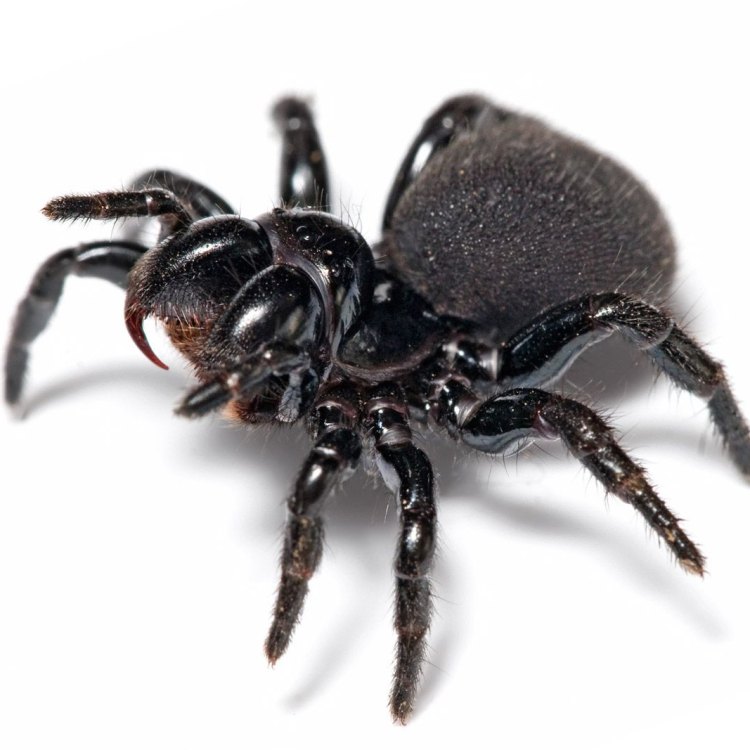
Missulena spp.
The Fascinating World of Mouse Spiders: Uncovering Their Unique Traits and Behaviors
Spiders are one of the most diverse and fascinating creatures on our planet. They come in all shapes and sizes, each with their own distinct characteristics and behaviors. One such spider species that has caught the attention of many is the Mouse Spider.Native to Australia, the Mouse Spider is known for its large size and shiny appearance PeaceOfAnimals.Com. But there is much more to these creatures than meets the eye. In this article, we will dive into the world of mouse spiders and uncover their unique traits and behaviors.
A Giant Among Spiders: Adult Size and Lifespan
One of the most striking features of the Mouse Spider is its impressive size. Compared to other spider species, adult Mouse Spiders can reach up to 2 inches in length. This makes them one of the largest spiders in the world.But don't let their size intimidate you. Despite their impressive appearance, Mouse Spiders are generally docile creatures and pose little threat to humans. In fact, they are quite shy and will try to avoid confrontation whenever possible.
Another interesting fact about Mouse Spiders is their lifespan Maine Coon. On average, these spiders live for about 3-5 years, making them relatively long-lived in the spider world. This may be due to their size and formidable appearance, which helps them to defend themselves against predators.
The Circle of Life: Reproduction and Mating Behavior
Like most spiders, Mouse Spiders reproduce sexually. Males will deposit sperm into specialized structures called spermathecae in the female's body, where it is stored until fertilization takes place.During mating, male Mouse Spiders perform a courtship display by drumming their leg tips on the ground. This not only attracts females but also serves as a form of communication between the two. They also produce vibrations and use pheromones to attract females, making for quite a romantic courtship ritual.
On a side note, it is interesting to mention that Mouse Spiders do not produce any sounds or calls, unlike many other spider species.
Not All Those Who Wander Are Lost: Migration Patterns and Social Groups
Contrary to popular belief, Mouse Spiders do not migrate. They typically stay within their burrow and only wander in search of food. These burrows can be quite deep, reaching up to 80cm underground, and are lined with silk to provide a safe and comfortable home for the spiders.As for social behavior, Mouse Spiders are strictly solitary creatures. They do not form any social groups or colonies and prefer to live and hunt alone. However, some female Mouse Spiders may share their burrows with their young until they are ready to venture out on their own.
A Nighttime Hunter: Nocturnal Behavior and Aggressive Traits
Mouse Spiders are primarily nocturnal creatures, which means they are most active during the night. During the day, they retreat to their burrows, avoiding the hot and dry conditions above ground.One of the most well-known traits of Mouse Spiders is their aggressive behavior. When threatened, these spiders can deliver a painful bite, using their large red fangs and spiny legs to defend themselves. However, they will only use this as a last resort and prefer to retreat when possible.
A Threatened Species: Main Threats and Conservation Status
Unfortunately, like many other species, Mouse Spiders are facing threats to their survival. The main threats include habitat destruction, climate change, and predation by larger animals. As their preferred habitat is often agricultural areas, the destruction of these areas has a significant impact on their population.The conservation status of Mouse Spiders varies depending on the species and location. Some species are classified as 'least concern', while others are listed as 'vulnerable' or 'endangered'. This highlights the importance of conservation efforts to protect these unique creatures from extinction.
The Unsung Heroes of Nature: Impact on Ecosystem and Human Use
Despite their fierce appearance and reputation, Mouse Spiders play a vital role in our ecosystem. As predators, they help to control insect populations, particularly in agricultural areas where their burrowing behavior helps to aerate the soil.Unfortunately, there is no significant human use for Mouse Spiders. Their venom is not considered medically significant and has no known use in traditional medicine. However, researchers are currently studying the venom for its potential use in medical research and the development of new drugs.
Distinctive Features and Fun Facts
Now that we have explored the world of Mouse Spiders, let's take a closer look at some distinctive features and fun facts about these fascinating creatures:- Mouse Spiders are often recognized by their large, shiny bodies, distinctive red fangs, and powerful spiny legs.
- They are named for their burrowing behavior, which is similar to that of mice.
- Their venom is currently being studied for its potential use in medical research and the development of new drugs.
- Female Mouse Spiders often dig deep burrows and create a trapdoor using silk and soil.
The Circle of Life: Predators and Their Prey
As with any species, Mouse Spiders have their own set of predators. These include larger animals such as birds, reptiles, and mammals. However, their venomous bite and aggressive behavior serve as a defense mechanism against these predators.In Conclusion
The world of Mouse Spiders is full of unique traits and behaviors that make them stand out among spiders. From their large size and impressive lifespan to their aggressive behavior and vital role in our ecosystem, these creatures are truly fascinating to learn about.As we continue to uncover more about Mouse Spiders, we can better understand and appreciate these often misunderstood creatures. However, it is crucial to remember the importance of conservation efforts to protect them and ensure their survival for generations to come.
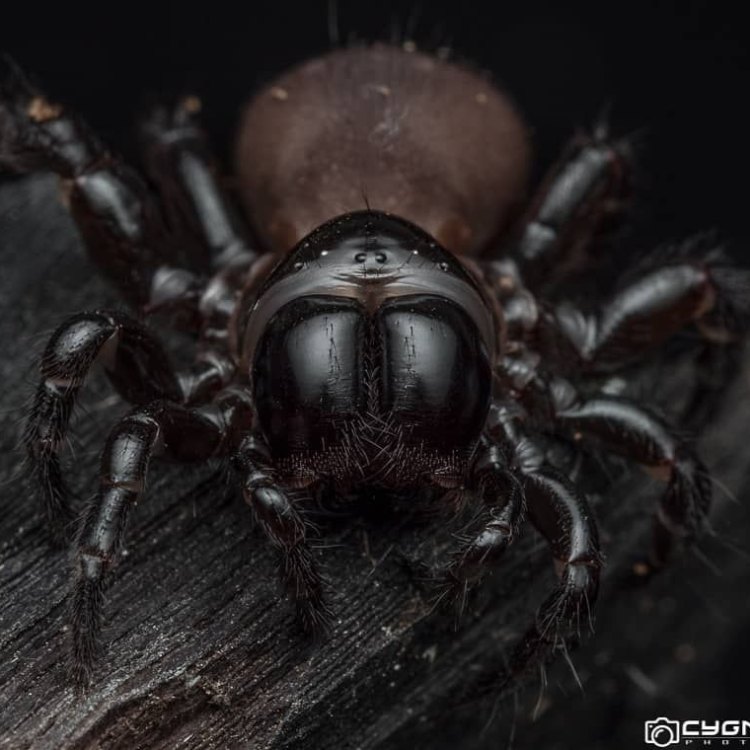
The Mighty Mouse Spider: A Fascinating Arachnid from Down Under
Disclaimer: The content provided is for informational purposes only. We cannot guarantee the accuracy of the information on this page 100%. All information provided here may change without prior notice.

